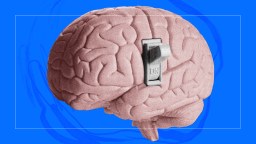The “PARA method” says we can organize our digital lives into 4 simple categories

- An ideal, actionable organizational system can accelerate the completion of projects and the achievement of goals.
- The PARA method is a simple system for organizing any type of information across any digital platform.
- PARA is based on the observation that there are only four categories that encompass all the information in your life: Projects, Areas, Resources, and Archives.
Imagine for a moment the perfect organizational system. A system that told you exactly where to put every piece of information in your digital life — every document, file, note, agenda, outline, and bit of research — and exactly where to find it when you needed it. Such a system would need to be incredibly easy to set up, and even easier to maintain. After all, only the simplest, most frictionless habits endure long term.
It would need to be both flexible, adapting to your needs in different seasons of your life, and comprehensive, so you can use it in every one of the many places where you store information. For example, the Documents folder on your computer, a cloud storage platform, or a digital note-taking app.
But most of all, the ideal organizational system would be one that leads directly to tangible benefits in your career and life. It would dramatically accelerate you toward completing the projects and achieving the goals that are most important to you.
In other words, the ultimate system for organizing your life is one that is actionable.
Instead of putting more obstacles in your path, postponing the actions that will make a difference, it would pull those actions closer and make them easier to start and finish.
After more than a decade of personal experimentation, teaching thousands of students, and coaching world-class professionals, I’ve developed such a system. It’s being used today by elementary schoolchildren all the way to multinational corporations, and everyone in between.
It’s called PARA — a simple, comprehensive, yet flexible system for organizing any type of information across any digital platform.
Whether you want to save excerpts from a book you’re reading, a voice memo about an interesting new idea, inspiring quotes from a podcast interview, web bookmarks with useful online resources, notes from important meetings or phone calls at work, photos that remind you of cherished memories, or your own personal journal entries, this system will equip you with a set of tools for preserving any information far into the future. And not only preserving it, but skillfully using it to achieve anything you set your mind to.
PARA is based on a simple observation: there are only four categories that encompass all the information in your life: Projects, Areas, Resources, and Archives.
You have projects you’re actively working on — short-term efforts (whether in your work or personal life) that you take on with a certain goal in mind. For example: complete webpage design; buy a new computer; write research report; renovate the bathroom; finish Spanish-language course; set up new living room furniture.
You have areas of responsibility — important parts of your work and life that require ongoing attention more broadly. These might include: Work responsibilities, such as marketing, human resources, product management, research and development, direct reports, or software development. Personal responsibilities such as health, finances, kids, writing, car, or home.
Then you have resources on a range of topics you’re interested in and learning about, such as: graphic design; organic gardening; web design; Japanese cuisine; photography; marketing assets.
Finally, you have archives, which include anything from the previous three categories that is no longer active but you might want to save for future reference: projects you’ve completed or put on hold; areas that are no longer active or relevant; resources that you’re no longer interested in.
And that’s it! Four top-level folders — Projects, Areas, Resources, and Archives — each containing subfolders dedicated to each specific project, area of responsibility, resource, and archive in your life.
Most of us first learned how to organize information in school… This makes zero sense in your post-academic career.
It may be difficult to believe that a complex, modern human life like yours can be reduced to just four categories. It may feel like you have far more to deal with than can fit into such a simple system. But that is exactly the point: if your organizational system is as complex as your life, then the demands of maintaining it will end up robbing you of the time and energy you need to live that life.
Most of us first learned how to organize information in school. We were taught to categorize our class notes, handouts, and study material by academic subject, such as math, history, or chemistry. Without realizing it, we took that same approach into adulthood. We continued to categorize our documents and files according to incredibly broad subjects like “Marketing,” “Psychology,” “Business,” or “Ideas.”
This makes zero sense in your post-academic career. In the workplace, there are no classes, no tests, no grades, and no diplomas. There is no teacher to tell you what to write down for the final exam, because there isn’t one.
What you do have, both at work and in life, are outcomes you are trying to achieve. You are trying to launch a new product, come to a crucial decision, or reach a quarterly sales number. You are doing your best to plan a fun family vacation, publish a new piece of personal writing, or find affordable day care in your neighborhood.
In the midst of your busy day, as you are trying to make these things happen, you absolutely do not have time to go rummaging through a vast category like “Psychology” to find the article you saved six months ago.
Instead of organizing information according to broad subjects like in school, I advise you to organize it according to the projects and goals you are committed to right now.
When you sit down to work on a graphic design project, for example, you will need all the notes, documents, assets, and other material related to that project all in one place and ready to go.
That might seem obvious, yet I’ve found it is exactly the opposite of what most people do. Most people tend to spread out all the relevant material they need to make progress in a dozen different places, which means they have to spend half an hour to locate them before they can even get started.
How do you make sure that all the material related to each project or goal is all in one place? You organize it that way in the first place. That way you know exactly where to put everything and exactly where to find it.
Your goals are that much closer to being achieved when all the information you need to execute your vision is right at hand. Let’s find out what you’re capable of achieving when the obstacles to that vision disappear.





